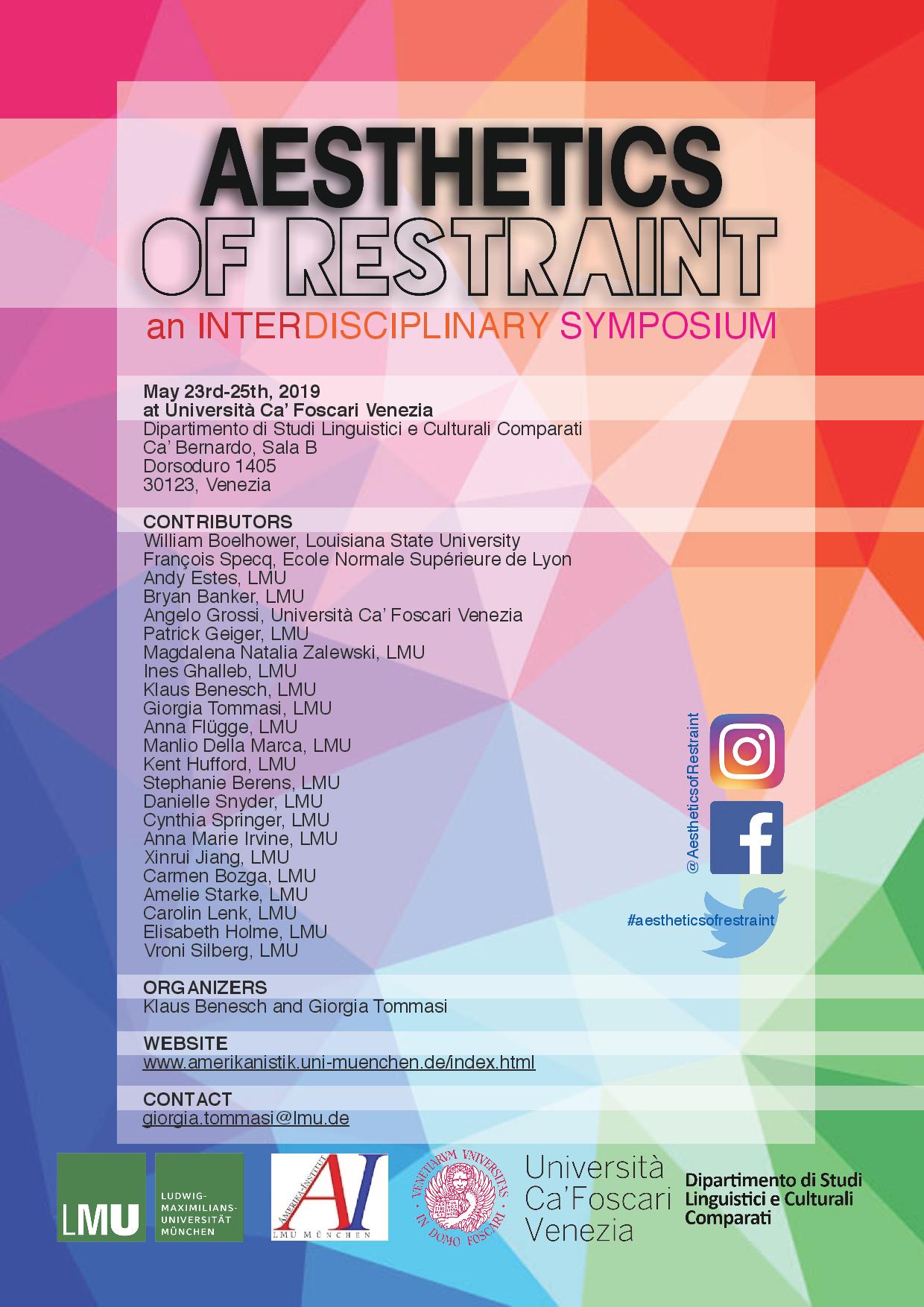Aesthetics of Restraint
ein interdisziplinäres Symposium des Amerika-Instituts der LMU
und der Università Ca’Foscari Venezia
23.–25. Mai 2019
Im Vorfeld der Konferenz sind insgesamt sieben kurze, von Studierenden geführte Video-Interviews mit Rednern des Symposiums entstanden, die wir hier präsentieren: Veronika Silberg sprach mit François Specq über Henry David Thoreau, Anna Marie Irvine befragte Andrew Estes (LMU) zu Jonathan Franzens Freedom, Xinrui Jiang führte ein Interview zu Ines Ghallebs (LMU) Vortrag mit dem Titel „Restraint as an Evolutionary Key to Civilizations“ und Elisabeth Holme diskutierte mit Bryan Banker (LMU) über restraint und civility im politischen Diskurs.
Weiter geht es hier mit Teil 2.
At the core of this conference is a powerful question that surfaces in several fields, from literature and the arts to philosophy and politics, from historical analysis to contemporary debates, namely the charged relationship between individual freedom and creative development on one hand, and the traditional, rule-based structures of the respective disciplines on the other. While this tension encompasses all modern societies, it seems to have significantly permeated through every level of U.S. American culture, where it has led to heated confrontations between individuals or single groups and controlling forces, be they genre restrictions, conventions, or regulatory state authorities. This tension is present in the interaction between the philosophically-understood free will of the individual and the normative influences of collective, societal regulations, between the free speech guaranteed by law and the rules that control public communication. What may seem like both a purely formal and academic issue has actual repercussions across social, political, and cultural domains. Investigating through the lens of restraint provides a different perspective to the far-reaching questions that are constitutive of modernity.
From a historical perspective, the aesthetics of restraint has taken on many meanings in U.S. society and reveals itself under several forms of ‘holding back’. In an American context, one can argue that, along with freedom, the concept of restraint is a founding principle. In the political sphere, more freedom for the powerful has often meant tyranny for the rest.[…] In U.S. American society, forms of restraint have most profoundly affected the indigenous, the enslaved and the otherwise unequal, and have been reified into discriminatory practices such as forced displacement of peoples and expropriation of land, the enforcement of bondage and codification of racial laws, and the suppression and denial of equal pay and equal rights.
External or self-imposed forms of restraint have been a point of reflection for American authors and artists across disciplines. Think of the moralist discipline that characterizes Puritan writing, of the meaning of freedom in slave narratives, of women writing against the restrictions of Victorian ideas of femininity at the end of the 19th century. Restraint as a theme in artistic disciplines can also be looked at in terms of form. This includes the function of formal requirements, category definitions, artistic conventions and how artists have reacted to/against them, as well as the role of criticism in the discussion of artistic practice and objects themselves.
The contemporary scene offers several examples of the significance of a reflection on restraint and its political consequences, from the discussion about the validity of national borders and free circulation, to the spread of alt-right movements in Europe and the United States, to unrestrained economic inequality, to social media as a new space for the expression of uninhibited reactions. By bringing together international master students, doctoral students and staff from LMU University of Munich and Ca’ Foscari University of Venice, as well as international scholars, this interdisciplinary discussion will try to identify key concepts and lines of thinking on the aesthetics of restraint.

